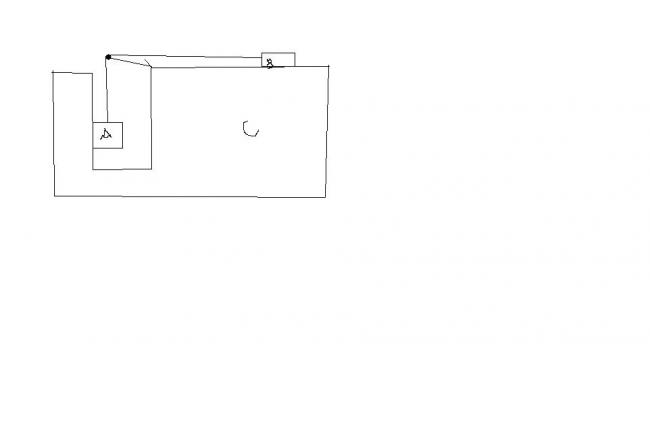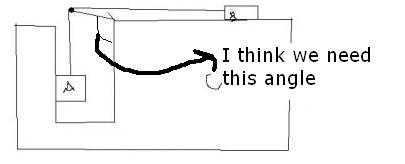@ashis , In ur FBD for A pseudo force will b in LHS and not in upward dire....
A small light pulley is attached with a block C of mass 4kg as shown. A block of mass 1.5kg is placed on the top horizontal surface of C. Another block A of mass 2 kg is hanging from a string, attached with B and passing over the pulley, system is released from rest. Accl of C is (g=10, nofriction)
1. 1.25
2. 1.5
3. 1.15
4.2.25

-
UP 0 DOWN 0 0 22

22 Answers
so, it is not that movement of A and B causes C to accelerate....it is quite the opposite.....movement of C causes movement of A and C???
assume there is a force and solve.. if C acclerates towards right (say) then it will push A with it too.. So, A will exert a force on C.
if the block is touching that face, then how ill there be a force??
asish, what force causes C to move??
Can pls u explain giving a diagram??
let the block C accelerate towards right with accn a.
Let acceleration of B wrt C be a1 towards left.. So actual acceleration of B is (a1-a) towards left.. acceleration of A in downward direction is a1.. the acceleration of A in horizontal direction is a.
Writing FBD of A.
2g-T=2a1 ... (i)
N(normal reaction by C) = 2a ... (ii)
FBD of B,
T=1.5(a1-a) ... (iii)
FBD of C along with pulley,
T-N = 4a ... (iv)
From (ii) and (iv) T=6a
and thus solving a=1.25
but i think all the forces on C act normally.... and nothing slong the sides
Then we nee d the angle which the ting which holds the pullley makes with C
It is YG file Q... I cudnt get the soln properly, so i want someone to explain clearly...



